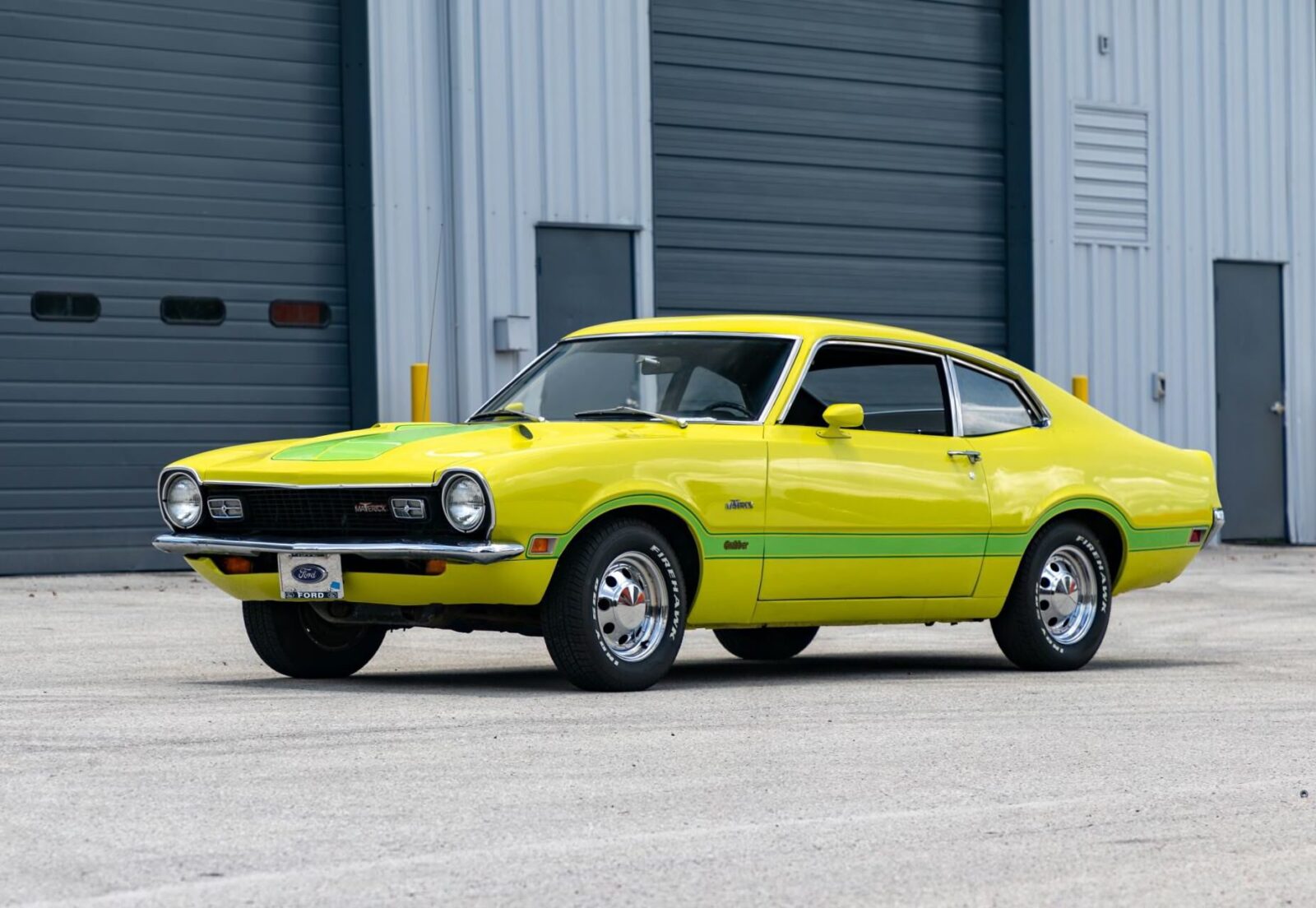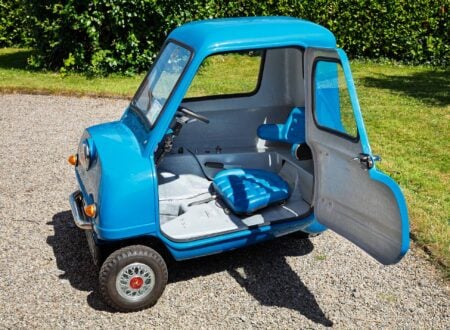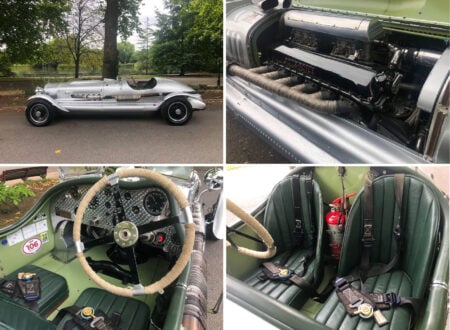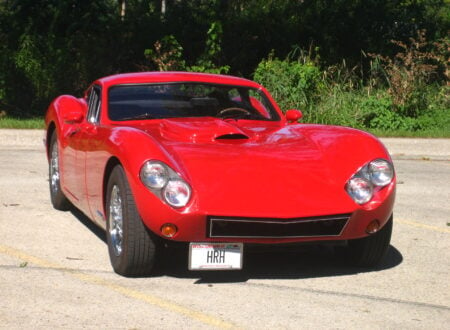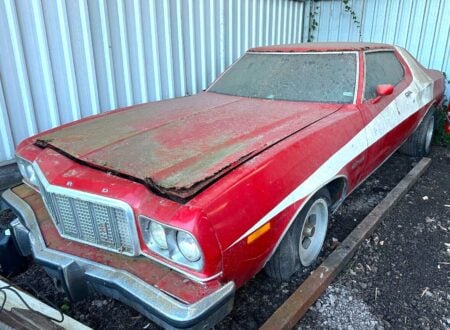This is an original Ford Maverick Grabber from 1972, it’s fitted with the desirable 302 V8 engine option and the manual transmission, as well as that Grabber package which included larger tires, uprated graphics and trim, and a spoiler.
When it was introduced in 1969 the Ford Maverick shot to the top of the sales charts, in the first year alone almost 579,000 were made – not far off the famously robust sales of the Mustang when it was first introduced with 619,000 units sold.
Fast Facts – The Ford Maverick Grabber
- The Ford Maverick was introduced in 1969 as a 1970 model. It was initially launched as a replacement for the Ford Falcon compact. With the rising popularity of compact cars during the late 1960s, particularly due to the success of models like the Chevrolet Nova and the Volkswagen Beetle, Ford was aiming to to capture a segment of the market.
- Over its production run the Maverick came with several engine options. Initially, it was offered with a 170 cubic inch (2.8 liter) six-cylinder engine, there was also a 200 cubic inch (3.3 liter) option. Ford later introduced the 250 cubic inch (4.1 liter) six-cylinder, followed by the 302 cubic inch (4.9 liter) V8.
- In 1970, Ford introduced the “Grabber” edition of the Maverick. This was a marketed as a sportier version that included a special graphics package, a spoiler, wider tires, upgraded trim, and early versions got a dual hood scoop. The Grabber was aimed at a younger audience and was intended to compete with other sporting compact cars of the era.
- Over the course of its 1970 to 1977 (model years) production run Ford would sell almost 2.1 million examples of the Maverick. It was the right car at the right time, and its low price tag, lower even than that of the VW Beetle, greatly helped sales.
The Ford Maverick – An Unlikely Success Story
The Maverick model name would make a well-publicized return to the Ford product line in 2021 as an affordable compact pickup truck. What many people under 50 don’t know is that the first Ford Maverick actually appeared in 1969, and it was about as far from a pickup truck as it’s possible to get.
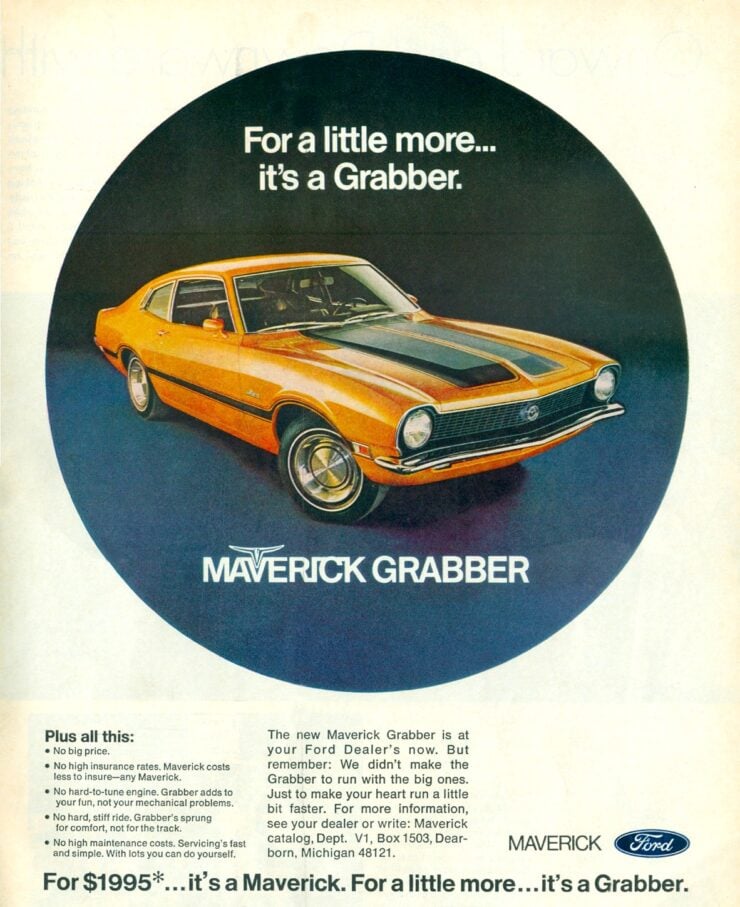

As the decade of the 1960s was drawing to a close Ford executives realized that their Falcon model series was in a state of terminal decline, and it would need to be replaced.
They took the Falcon platform and developed a new compact car, a two-door hardtop with the same fastback roofline that had been popularized by the Mustang. They called this car the Maverick, a name used to describe wild, unbranded range animals as a reference to the Mustang.
The 1970s would be a time when, thanks to the 1973 Oil Crisis and ever increasing crash safety and emissions regulations, cars became a little less exciting than they had been in the 1960s. Or perhaps a lot less exciting.
Fire-breathing V8s were being replaced by sixes and fours, and the V8s that did remain would be choked almost to death by emissions equipment that resulted in horsepower numbers nosediving to levels not seen since the early 1950s.
For American automakers the 1970s would be one of the most difficult decades in their history. This time was retroactively named “The Malaise Era,” by popular automotive writer Murilee Martin.
The job set out before the Ford Maverick when it was released in 1969 was almost impossible in retrospect – its job was to have sports car appeal and to attract a younger crowd of buyers, all while having smaller engines, less power, and a smaller physical size than its predecessors.
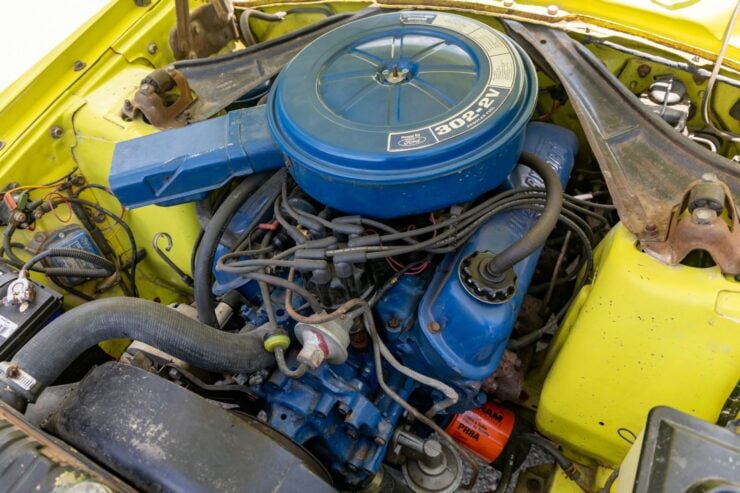

Amazingly, somehow, the Maverick pulled it off. Its first full year of sales would reach almost 579,000. The car was cheaper than the VW Beetle while being a far newer design and, for a time at least, people couldn’t get enough of them.
The Maverick was originally offered with the fuel efficient 170 cubic inch (2.8 liter) six-cylinder engine as the standard fitment, and a 200 cubic inch (3.3 liter) six as an optional upgrade. The 250 cubic inch (4.1 liter) six-cylinder was introduced mid-year due to demands for more power.
1971 would see the additional option of Ford 302 cubic inch (4.9 liter) V8 offering 210 bhp – a significant step up over earlier engine choices and perhaps more inline with what people would have expected from a “Mini Mustang” like the Maverick.
Transmission options weren’t particularly exciting for the car, you had to choose between the three-on-the-column manual or the optional SelectShift three-speed automatic transmission.
As the 1970s progressed Maverick sales began to wane, it was supposed to leave production in the mid-1970s and be replaced by the Ford Granada, however it remained in production until 1077 when the Ford Fairmont made its debut.
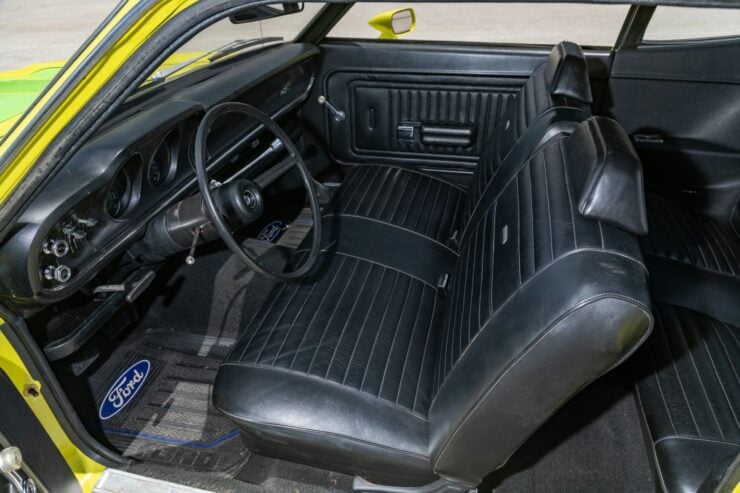

In total, Ford sold almost 2.1 million examples of the Maverick and it fulfilled the original goal of competing with the cheap and increasingly abundant import cars from Japan and Europe.
The 1972 Ford Maverick Grabber Shown Here
The car you see here is a Ford Maverick that was factory-fitted with the Grabber option package. This package included special graphics, a real lip spoiler, wider tires, upgraded trim, and early versions got a dual hood scoop.
This vehicle was also ordered with the manual transmission and the Ford 302 V8, making it just about the fastest and most desirable specification Maverick ever made.
The paintwork is yellow with green striping down the sides, on the hood, and across the rear. It has a black interior with black vinyl seats, black door trim, and black carpeting throughout.
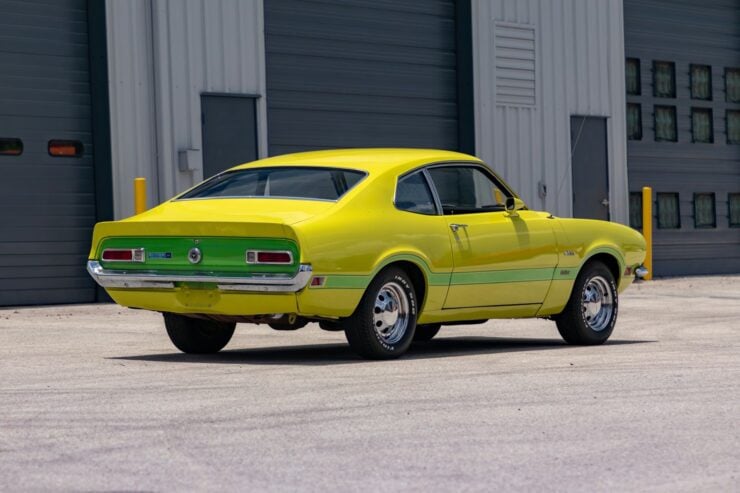

You’ll find a bench seat up front and in the rear, a JVC cassette stereo, and it rides on polished wheels with Firehawk radial tires. It has 14,310 miles on the odometer, looking over the original, unrestored condition of the car it looks to be a true low-mileage survivor.
If you’d like to read more about it or register to bid you can visit the listing here on Mecum. It’s due to roll across the auction block with them in January and at the time of writing there is no price guide on the car.
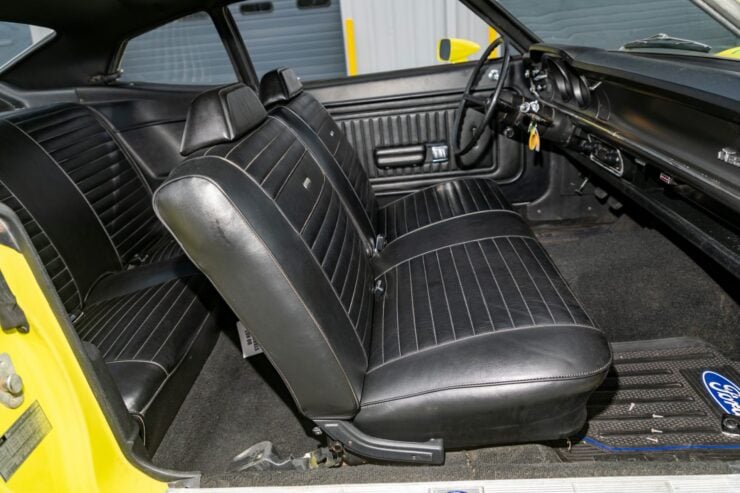
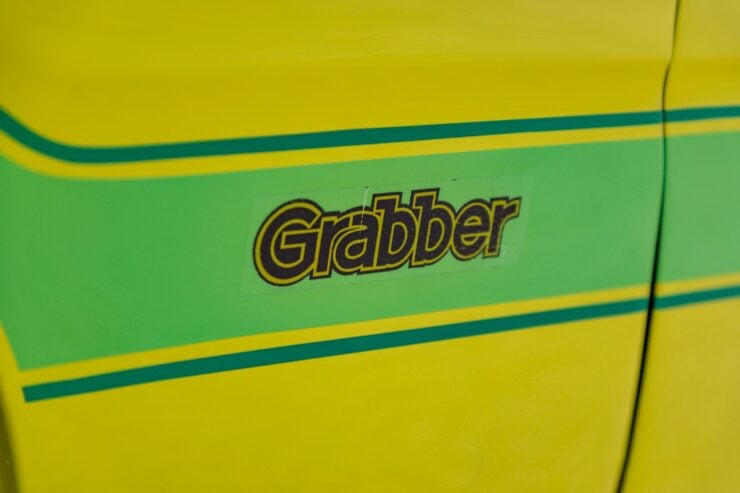
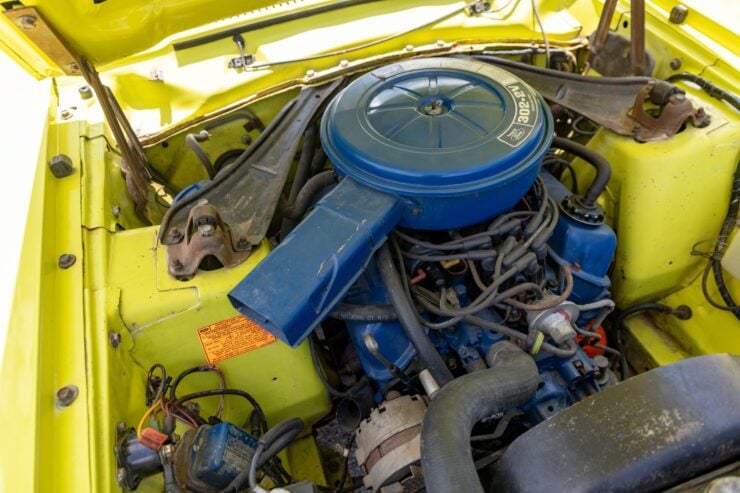
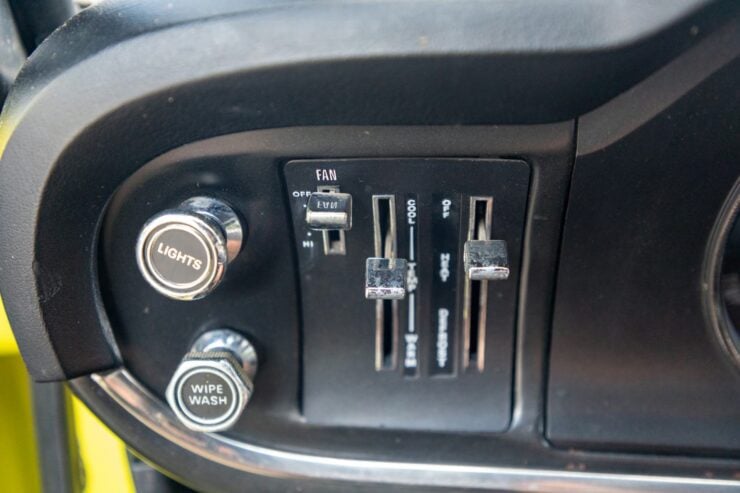
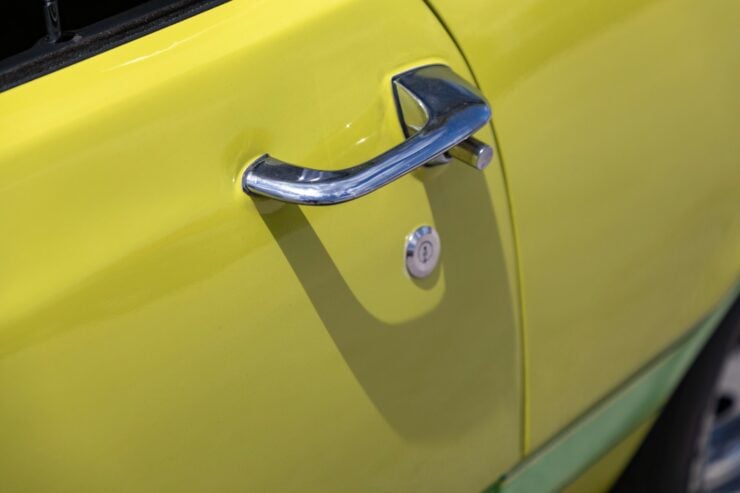
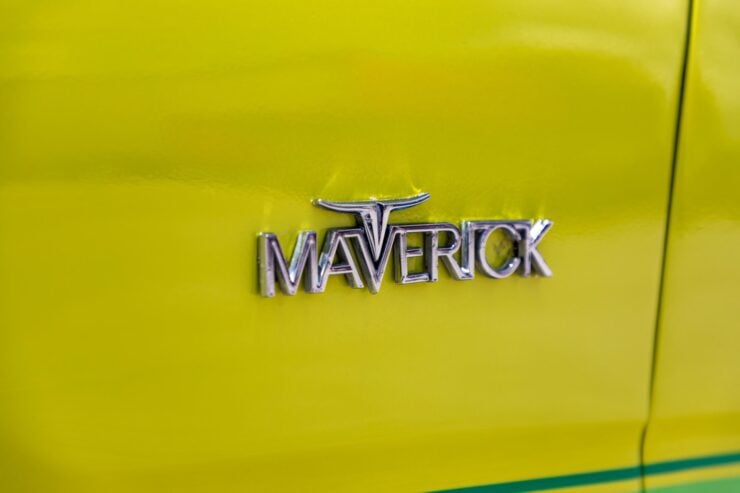
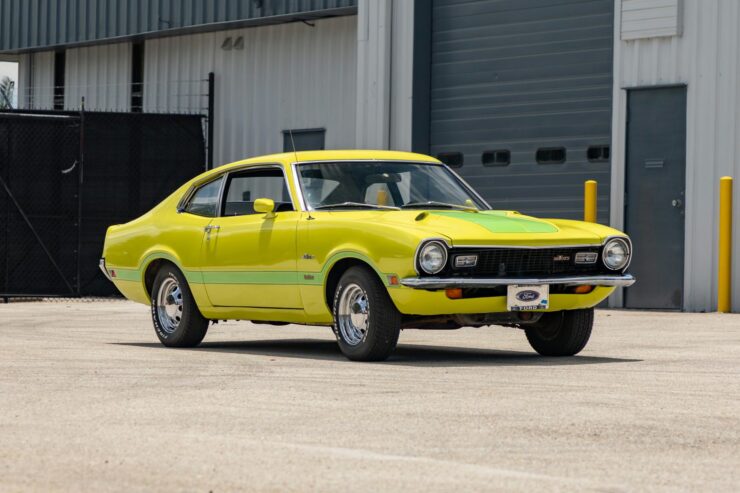
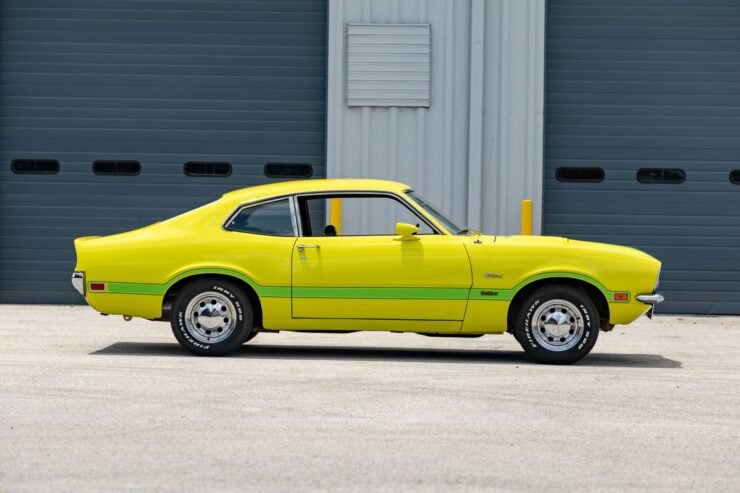
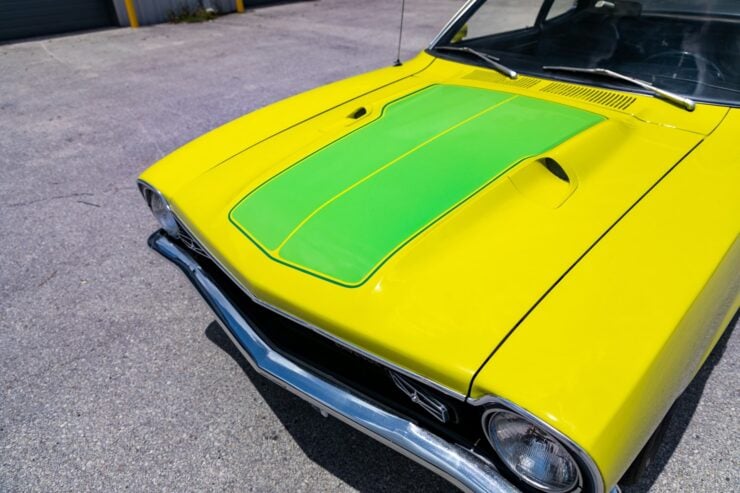
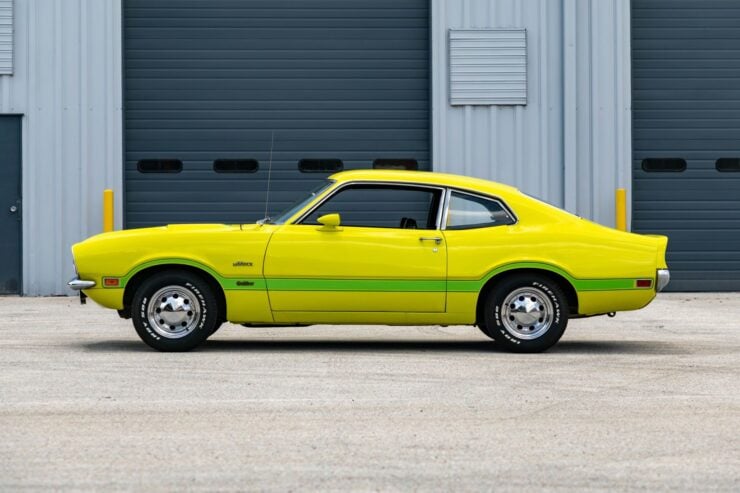
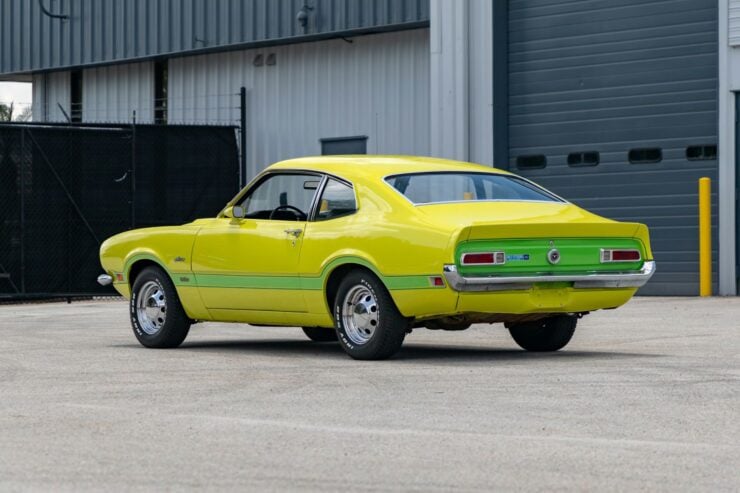
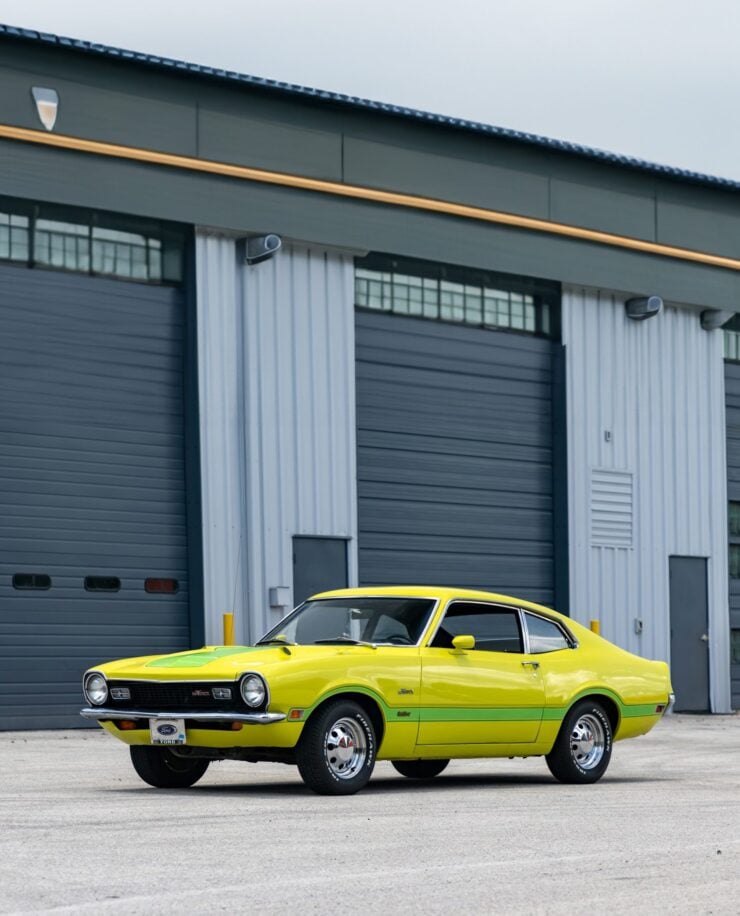
Images courtesy of Mecum

